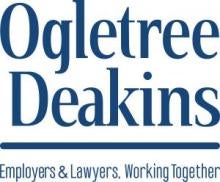Even as high-priority issues such as diversity, equity, and inclusion (DEI), immigration, and Ukraine take center stage in the first months of the new presidential administration, many employers are wondering what the next four years might mean for employee benefits.
Quick Hits
- The Heritage Foundation’s Project 2025 provides clues for potential employee benefits changes under the second Trump administration.
- Project 2025 calls for reversing federal rules that added gender identity, sexual orientation, and pregnancy as protected classes covered under the nondiscrimination provisions of the Affordable Care Act.
- Project 2025 also proposes eliminating the dispute resolution process under the No Surprises Act in favor of a “truth-in-advertising approach.”
Plan sponsors may find clues in Project 2025, the far-reaching report produced by Washington, D.C., think tank Heritage Foundation as a blueprint for a second Trump administration and actually written in part by a number officials in the first Trump administration and public advocates for the 2024 Trump presidential campaign. (The president distanced himself from Project 2025 during the campaign, although several contributors are serving in the new administration.)
Specifically, three chapters of the 900-plus page report may offer insight for plan sponsors: one covering the U.S. Department of Health and Human Services (HHS), one covering the U.S. Department of the Treasury (Treasury), and one covering the U.S. Department of Labor (DOL) and related agencies.
Below, we dust off our copies of the report—originally released in 2023—and recap a few notable Project 2025 employee benefits policy recommendations (and the specific page numbers in the report):
- ACA Section 1557: Reverse federal rules that added gender identity, sexual orientation, and pregnancy as protected classes covered under the nondiscrimination provisions of Section 1557 of the Affordable Care Act (ACA). These provisions have a limited impact on employee benefit plans, and in 2020, the Trump administration issued regulations that removed provisions detailing specific forms of discrimination, including gender dysphoria treatment, health insurance participation, and benefit plan design. (Page 475)
- No Surprises Act: Encourage the U.S. Congress to revisit the 2021 legislation, including addressing the “deeply flawed system for resolving payment disputes between insurers and providers.” Project 2025 advocates eliminating the dispute resolution process in favor of a “truth-in-advertising approach.” (Page 469)
- State restrictions on “anti-life” benefits: Encourage Congress and the DOL to “clarify” that the Employee Retirement Income Security Act (ERISA) would not preempt state attempts to prevent employer-sponsored health benefit plans from offering plan coverage for abortion, surrogacy, or other “anti-life” health care benefits (Page 585)
- Individual Retirement Accounts (IRAs): Increase the IRA contribution limit to equal the amounts that can be contributed under 401(k) or 403(b) plans with respect to married couples. (Page 588)
- Independent contractor benefits: Project 2025 encourages Congress to provide “a safe harbor” from employer-employee status when an employer permits independent contractors to participate in employer-provided benefits. Traditionally, only common law employees can participate in employer-sponsored retirement programs. (Page 591)
- ESG investing: Encourage the DOL to prohibit ERISA retirement plans from investing plan assets based on any factor other than investor risks and returns, specifically environmental, social, and governance (ESG) factors. In addition, Project 2025 encourages the DOL to consider taking “enforcement and/or regulatory action to subject investment in China to greater scrutiny under ERISA” based on a perceived lack of compliance with American accounting standards and state control of Chinese companies. (Page 606)
- Multiemployer plans: Project 2025 advocates greater scrutiny and reporting requirements for multiemployer plans, which are jointly administered by unions and employers. Among the specific recommendations is that the Pension Benefit Guaranty Corporation (PBGC), which insures defined benefit pension plans, require more detailed and timely reporting from plans. (Page 609)
- ESOPs: Project 2025 recommends the DOL issue regulations that encourage greater participation in employee stock ownership plans (ESOPs). (Page 610)
- Cap benefits deductibility: Project 2025 recommends limiting the amounts that employers can deduct for certain benefit costs to $12,000 or less per year per full-time equivalent employee. Retirement plan contributions would not count against that limit, and only “a percentage” of contributions to health savings accounts (HSAs) would count toward such limitation. (Page 697)
- Deductibility for dependent coverage: Limit the ability of employers to deduct the value of health insurance and other benefits provided to employee dependents who are 23 or older. (Page 697)
- Universal Savings Accounts (USAs): Establish accounts for taxpayers to contribute up to $15,000 of post-tax wages into USAs, similar to Roth IRAs. Investment gains would be nontaxable, portable, and withdrawable at any time for any purpose without penalty. (Page 696)





 />i
/>i
